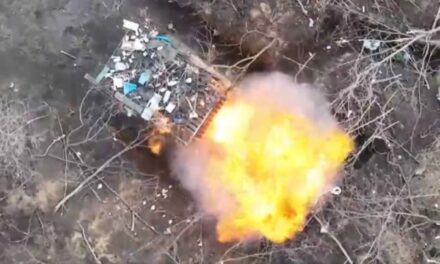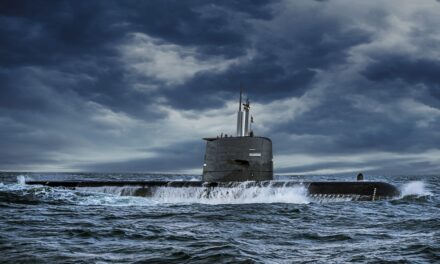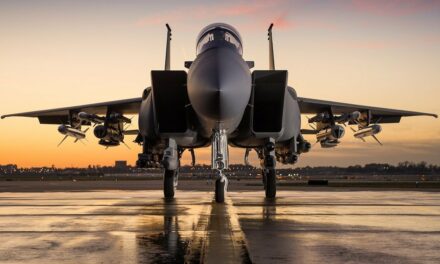We support our Publishers and Content Creators. You can view this story on their website by CLICKING HERE.
Key Points: The USS George Washington (CVN 73), a critical U.S. Navy nuclear-powered aircraft carrier, was out of action for an extensive six years undergoing a Refueling and Complex Overhaul (RCOH). Delays were attributed to budgeting decisions, unanticipated ship conditions, and pandemic-related setbacks.
-This extended downtime impacted Navy readiness and quality of life for sailors, with nine suicides reported during the period. With other carriers like the USS John C. Stennis now in RCOH, there’s a pressing need to improve maintenance timelines and support for sailors.
-Recommendations include increased oversight and quality-of-life investments to maintain operational capabilities amid rising global threats.
Six Years Out of Action: Aircraft Carrier USS George Washington’s Long Overhaul
I love aircraft carriers, but I know their limitations. These days, anti-ship missiles could sink an American flat-top. They could easily succumb to submarines, and they are costly to maintain. But one U.S. Navy carrier takes the cake for being a liability and stubbornly out of action for years. I am referring to the USS George Washington, which remained in port for an incredible six years for repairs.
Now, it’s true that nuclear-powered carriers have to come home to refuel the reactors. That is understandable, but this downtime period took too long and hurt the Navy’s operational readiness.
USS George Washington could have patrolled hot spots in the Middle East, Europe, and East Asia during the 2020s. It’s not a good sign that the Navy has to endure such a long waiting game to keep these flat-tops steaming in the high seas. The Chinese and Russians have taken note and are likely smiling, knowing that American carriers are often down for repairs for lengthy periods.
USS George Washington Is Critical In East Asia
George Washington had an excellent record of service in the Indo-Pacific. It was homeported in Japan from 2008 to 2015. There, it kept the sea lines of communication open for civilian shipping transit in the region. The GW also reminded the Chinese that Americans carried a big stick in the waters that Beijing thought they owned.
What Took So Long?
What about those six years of repairs?
Shipbuilder HII started the “dog ate my homework” wa-wa dance by explaining how long this process took.
“Factors that extended the RCOH [Refueling and Complex Overhaul] included delays and changes in her RCOH planning and induction timeline due to FY15 budgetary decisions to inactivate (vice refuel) this ship; the arrival condition of the ship, which was more challenging than expected, planned or budgeted for, including growth work in significant areas of the RCOH; the requirement to remove critical parts from CVN-73 to support higher-priority, deploying aircraft carriers; and the impact of COVID-19 on the workforce and industrial base.” HII made this murky statement to USNI News in 2023 when George Washington finally returned to sea trials.
Too Much Tragedy for One Vessel
That’s not all.
Sailors assigned to USS George Washington had nothing to do during the refueling and overhaul period. Living conditions were terrible, and many personnel became depressed. Then tragedy struc,k and some took their own lives.
From 2017 through April 2022, nine sailors committed suicide, and the Navy instituted a “quality of life” investigation.
Another Carrier Has Been Out of Action for Three Years
Now, the aircraft carrier John C. Stennis is in port for the Refueling and Complex Overhaul process. Hopefully, this won’t take six years. It has been at HII Newport News since 2021. One good thing about RCOH is that after the maintenance period it is supposedly good for another 50 years. I find that prediction optimistic.
Hopefully, John C. Stennis’ maintenance period will improve the quality of life for its sailors.
Indeed, the Navy agreed to pay HII Newport News a $78 million contract this year for a facility that will give the personnel a needed home away from home to prevent mental health issues. This building will have a gym and offices where sailors can receive counseling.
The U.S. Navy Needs to Do Better
There must be a better way to keep the RCOH from taking so long. Stennis has been down for three years. Is it going to take another 36 months before it hits the water? Our adversaries are licking their chops. The United States always brags that it leads the world in the number of its carriers, but that claim is misleading because of the extended maintenance periods that take these vessels out of action. What about the men and women who serve on carriers during RCOH? HII should build quality of life centers with their own money without U.S. government investment. That’s a no-brainer.
EAST CHINA SEA (Dec. 6, 2010) The aircraft carrier USS George Washington (CVN 76) transits the East China Sea. George Washington is participating in Keen Sword 2010 with the Japanese Maritime Self-Defense Force through Dec. 10. (U.S. Navy photo by Mass Communication Specialist 3rd Class Casey H. Kyhl/Released)
I question the efficacy of HII. Congress must get involved for better oversight because a six-year RCOH is unacceptable. Let’s solve this problem while the Navy answers the challenges of a three-front war contingency. There are conflicts in Ukraine and Russia, Israel and Hamas, Hezbollah and Iran.
Don’t forget those Houthi rebels in Yemen who are a pain in the rear. That leaves China and its three aircraft carriers bullying their neighbors and placing the United States in a bind when its flat-tops go on RCOH.
This will be an issue for the new Secretary of the Navy under President-elect Donald Trump.
Aircraft carriers shouldn’t be trapped in RCOH hell for six years.
About the Author: Dr. Brent M. Eastwood
Brent M. Eastwood, PhD, is the author of Don’t Turn Your Back On the World: a Conservative Foreign Policy and Humans, Machines, and Data: Future Trends in Warfare, plus two other books. Brent was the founder and CEO of a tech firm that predicted world events using artificial intelligence. He served as a legislative fellow for U.S. Senator Tim Scott and advised the senator on defense and foreign policy issues. He has taught at American University, George Washington University, and George Mason University. Brent is a former U.S. Army Infantry officer. He can be followed on X @BMEastwood.

 Conservative
Conservative  Search
Search Trending
Trending Current News
Current News 





